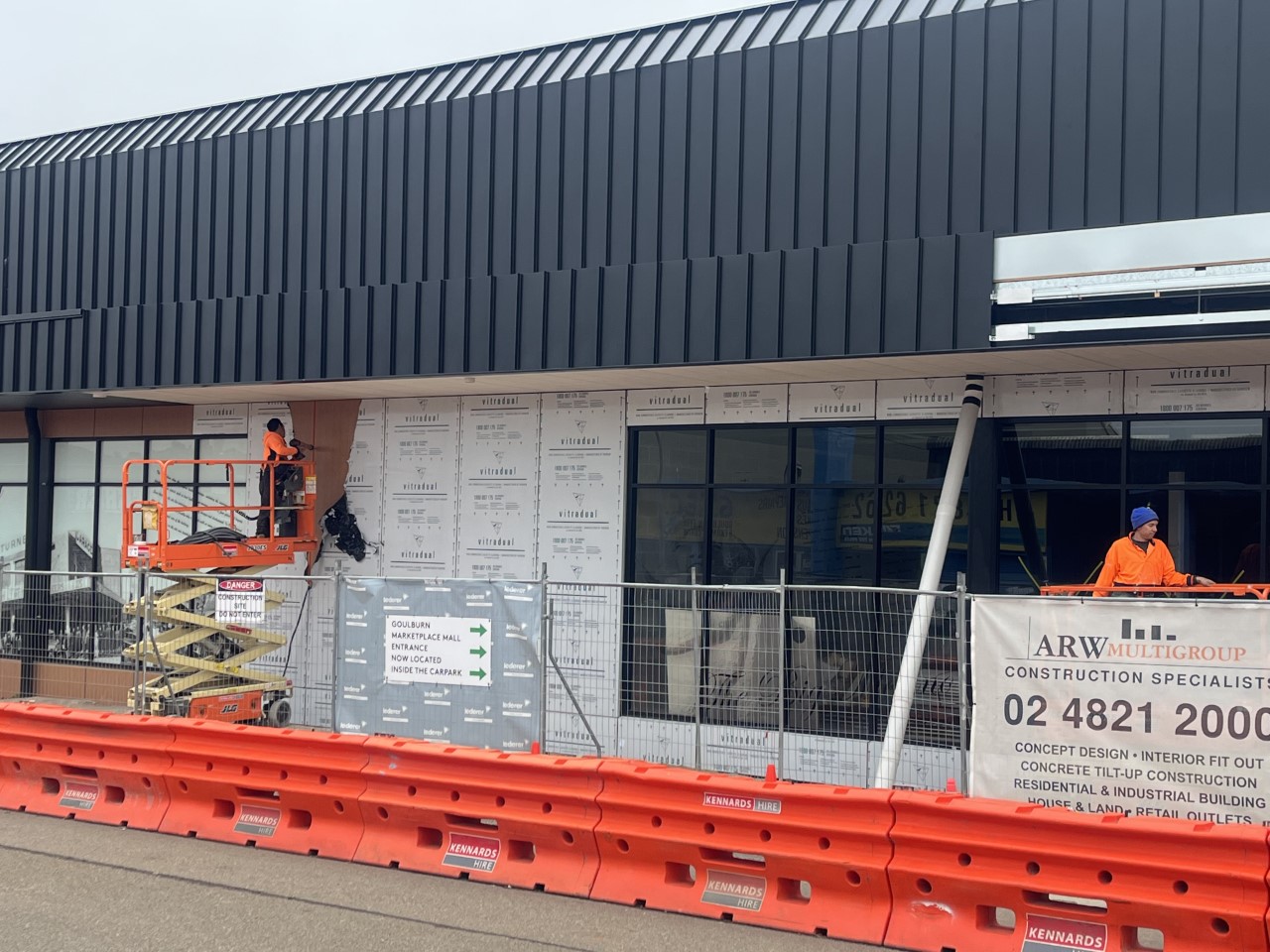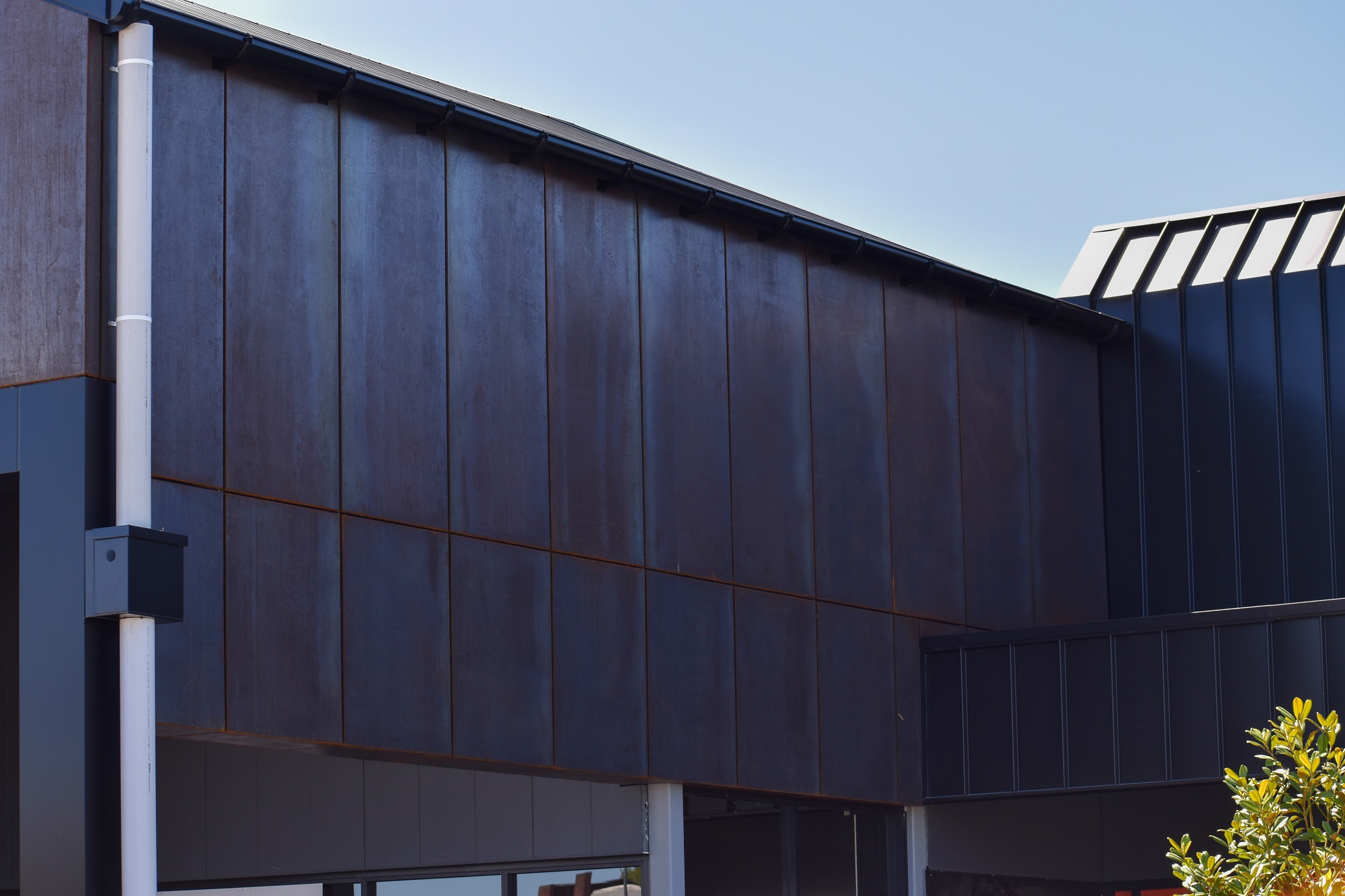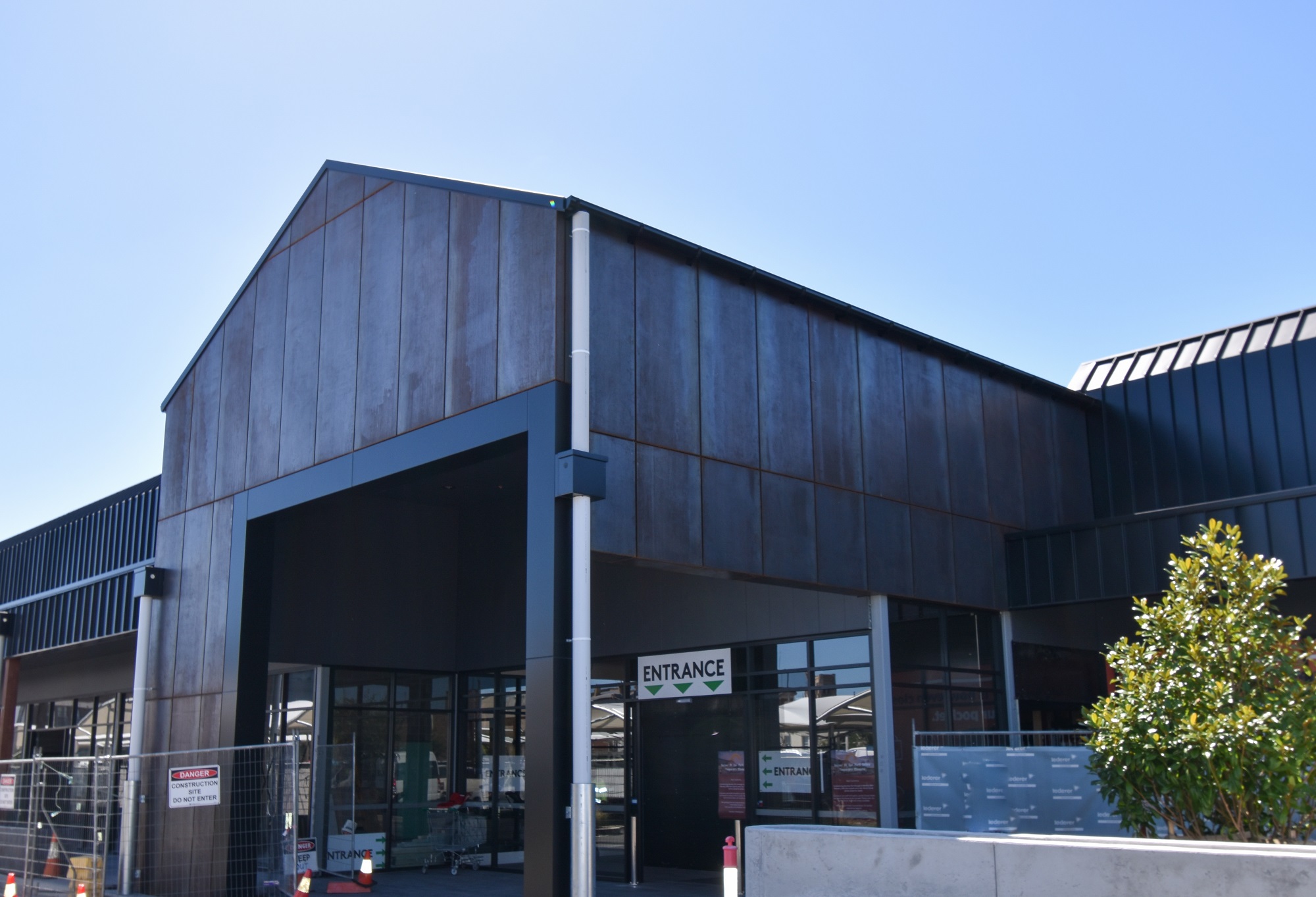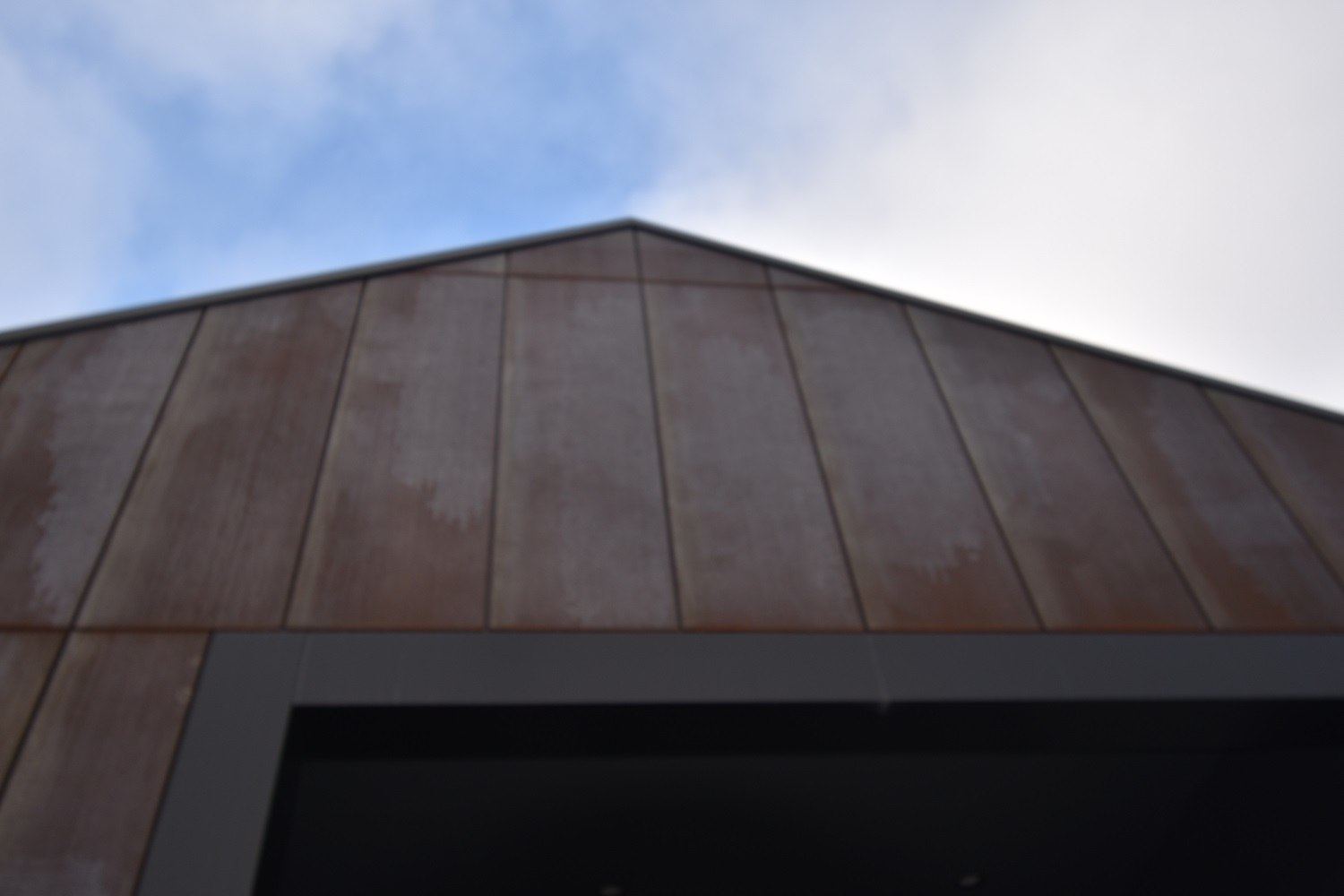Following on from our blog post earlier this year where we looked at the “5 Benefits of Using Corten Steel on your Building Façade”, here we look at how quickly Corten Steel will age using a real-life example.
As you may remember, we had recently completed installing Corten Steel panels on the Goulburn Marketplace in Goulburn New South Wales. At the time, these panels had a dark grey/black finish and would eventually age to the desired finish of an orange-reddish colour.
Firstly, let’s take a quick step back and remind ourselves why Corten Steel is becoming one of the most popular exterior façade materials amongst designers.
Essentially, it is a stable material that will provide a truly unique appearance to each project but with one thing in common – they will all be aesthetically pleasing to passersby.
It is interesting that in its original form, Corten has a silvery grey appearance, however, it adopts a rust-like orange-brown colour over time due to the development of a protective coating called patina. If you are not familiar with patina here is a brief overview.
What is Patina?
A rust patina, or simply patina, is a dark brown coating of oxidation that develops on a sheet of metal over time. This oxidation layer offers additional protection to the metal against pollutants, moisture, and corrosion. It also ensures that rust doesn’t penetrate and weaken the cladding material.
As the patina serves as a protective layer on Corten, an advantage is that you don’t need to clean or maintain the metal. The patina simply forms naturally and provides a beautiful rusty tint.
Why does Corten Patina?
The composition of Corten steel is such that it has extra amounts of copper, phosphorus, and nickel-molybdenum. As such, like other types of steel, it tends to rust when exposed to air, moisture, and other environmental elements. In conventional steels, as the rust layer dries over time, it gets porous and detaches itself from the metal surface, beginning a new rust cycle under the detached layer that eventually weakens the metal. But that’s not the case with Corten steel.
What happens with Corten is that while it rusts the same way as conventional steels, the presence of the alloys mentioned above makes for a stable layer of rust that retains the integrity of the panel. This protective layer, or patina, continues to regenerate itself on further exposure to weather, and the steel becomes less permeable.
The patina takes a maximum of 3 years to mature. During this time, it takes different shades and accentuates the true beauty of the natural metal.
The Changing Patina
While there is no definite timeline for the patina formation and its changing shades, it usually takes 1 to 3 years for the protective layer to develop. The pace at which patina forms on Corten depends on the surrounding environment and several other factors like humidity, proximity to bodies of water, and the alteration between dry and wet conditions.
As promised, here are some photos of the real-time patina changes on the Goulburn marketplace:


1-3 months
3-6 months

6-9 months

9-12 months
Generally, the patina layer develops more quickly when the Corten Steel gets exposed to the environmental cycles often. If you don’t want the steel to weather naturally, it is possible to speed up the process with a solution of salt, hydrogen peroxide, and vinegar applied evenly on the metal surface.
The Perfect Patina
Even though the patina develops naturally depending on the surrounding environment, there are a few things that can help achieve a perfect patina:
- It is important for Corten to be subjected to alternating dry and wet conditions so that a perfect patina can develop, and the steel achieves a distinctive colour. Water must run off it freely to get an even colour across the metal sheet and shouldn’t stay in certain areas.
- In damp conditions it is difficult for the Corten Steel to develop the protective patina and achieve the intended colour.
- If the Corten panels are directly in contact with the earth, vegetation, or even snow, this may affect the colour of the patina.
Often, Corten is perforated to add to its aesthetic appeal and create a unique look such as these projects also completed by the team at Completed Façade Solutions. Perforating panels are a design feature that is currently popular for modern apartment buildings, office towers and carparks. This fabrication process can be provided by our sister Company, CFS Fabrication.
Now that you know how the changing patina of the Corten steel adds to the aesthetic appeal of your exterior façade, we encourage you to consider it for your next project. It not only makes exteriors beautiful but more durable and resistant to harsh weather conditions.
For more information on Corten Steel and how you can use it in your architecture design, contact our team online today or call us on 02 9521 3311.
